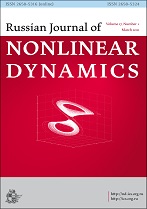|
Mathematical problems of nonlinearity
Homotopy Analysis Method and Time-fractional NLSE
with Double Cosine, Morse, and New Hyperbolic
Potential Traps
U. Ghosha, T. Dasb, S. Sarkara
a University of Calcutta, Department of Applied Mathematics,
92 A. P. C. Road, Kolkata, India
b Kodalia Prasanna Banga High School (H.S.),
South 24 Parganas 700146, India
Аннотация:
A brief outline of the derivation of the time-fractional nonlinear Schrödinger equation (NLSE) is furnished. The homotopy analysis method (HAM) is applied to study time-fractional NLSE with three separate trapping potential models that we believe have not been investigated yet. The first potential is a double cosine potential $[V(x)=V_1^{}\cos x+V_2^{}\cos 2x]$, the second one is the Morse potential $[V(x)=V_1^{}e^{-2\beta x}+V_2^{}e^{-\beta x}]$, and a hyperbolic potential $[V(x)=V_0^{}\tanh(x)sech(x)]$ is taken as the third model. The fractional derivatives and integrals are described in the Caputo and Riemann Liouville sense, respectively. The solutions are given in the form of convergent series with easily computable components. A physical analysis with graphical representations explicitly reveals that HAM is effective and convenient for solving nonlinear differential equations of fractional order.
Ключевые слова:
time fractional nonlinear Schrödinger equation (NLSE), homotopy analysis
method (HAM), Caputo derivative, Riemann – Liouville fractional integral operator, trapping
potential.
Поступила в редакцию: 27.01.2021
Принята в печать: 14.02.2022
Образец цитирования:
U. Ghosh, T. Das, S. Sarkar, “Homotopy Analysis Method and Time-fractional NLSE
with Double Cosine, Morse, and New Hyperbolic
Potential Traps”, Rus. J. Nonlin. Dyn., 18:2 (2022), 309–328
Образцы ссылок на эту страницу:
https://www.mathnet.ru/rus/nd795 https://www.mathnet.ru/rus/nd/v18/i2/p309
|

| Статистика просмотров: |
| Страница аннотации: | 71 | | PDF полного текста: | 74 | | Список литературы: | 27 |
|




 Обратная связь:
Обратная связь: Пользовательское соглашение
Пользовательское соглашение
 Регистрация посетителей портала
Регистрация посетителей портала Логотипы
Логотипы







 Цитирование в формате
Цитирование в формате 